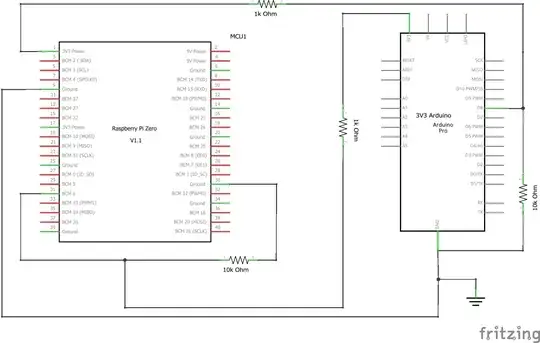I have Pi4 on a UPS and a 3.3 volt Arduino (Nano 33 IOT) supplied without a UPS protection.
I am designing a system where Pi monitors a 3.3V Arduino pin to know if there is a power outage (and shut down orderly if needed). Upon power return, Arduino would detect if Pi is off (by monitoring the 3.3V Pi pin) and briefly open the Pi power supply circuit to reboot the Pi. The Arduino-Pi connections diagram is below.
Is it safe to connect the a GPIO Pi pin directly to the Arduino's 3V3 pin, and vice versa as depicted in the schematic? Or should I have a 220 Ohm resistor between the Pi's GPIO and Arduino's 3V3 pin and between the Arduino's D and Pi's 3V3 pin?
EDIT based on the comments below:
The proposed solution:

